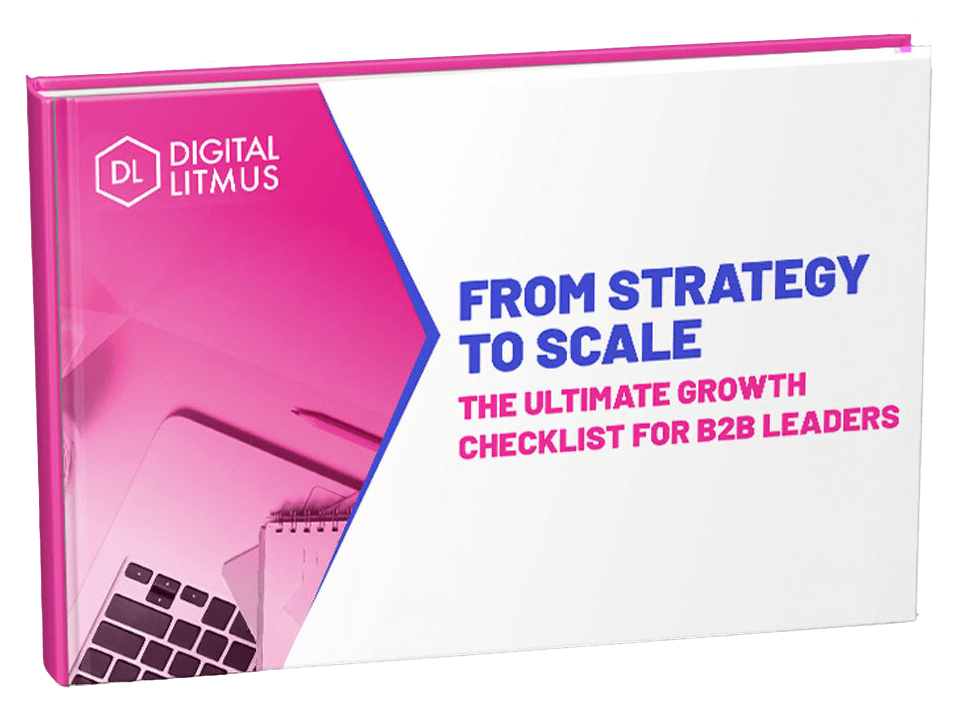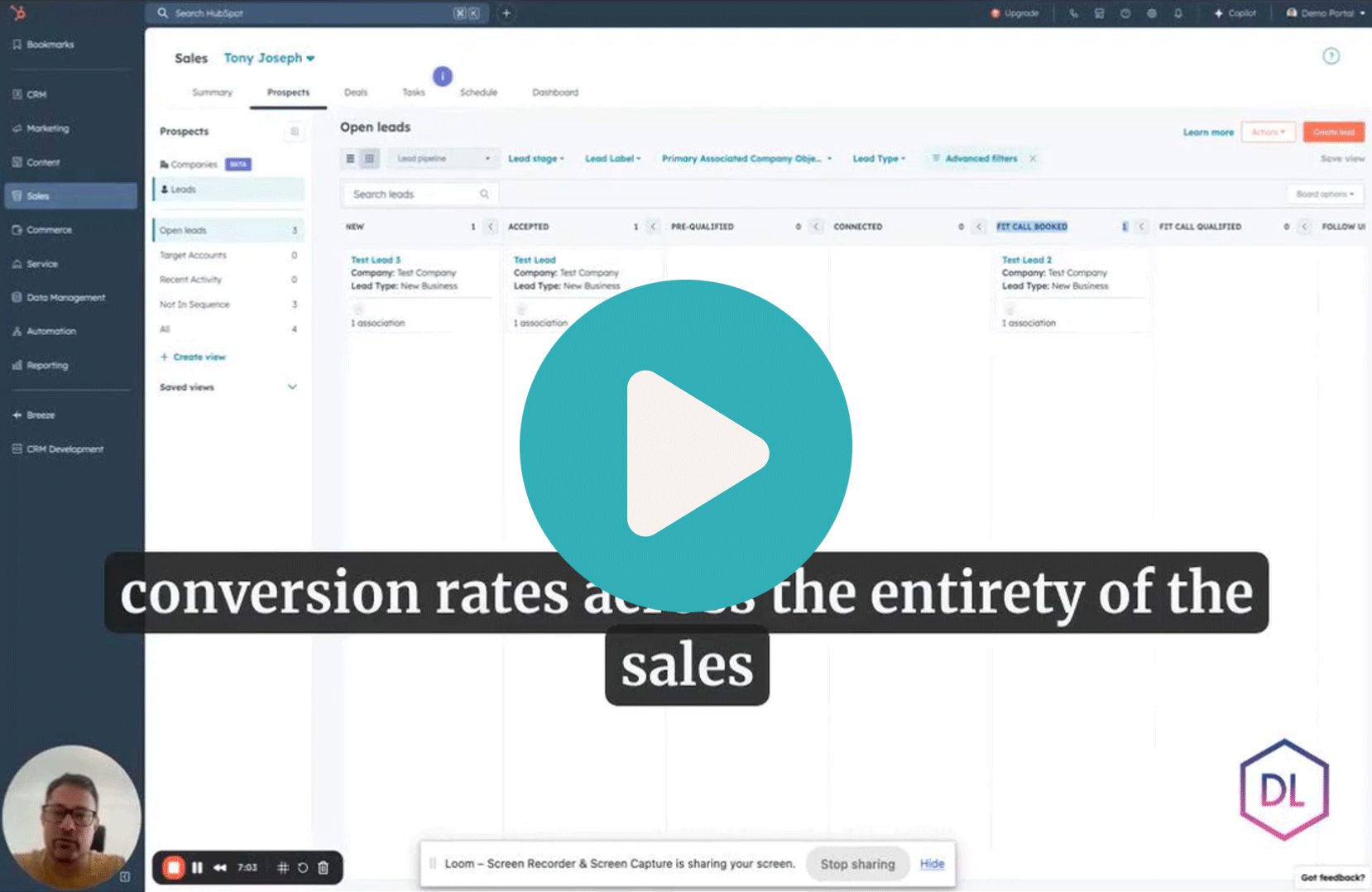Here's something we notice almost every time we audit a new client's HubSpot portal. Their lifecycle stages are a mess. Not slightly untidy. Not "could use some work." A proper, trust-eroding, revenue-blocking mess.
As a HubSpot Solutions Partner, we spend a lot of time inside other companies' CRMs. We see the patterns. We spot the gaps. And one issue surfaces more than almost anything else. Lifecycle stages that are either vaguely defined, inconsistently applied, or worse, completely ignored.
Which is frustrating, because when lifecycle stages are done right, they're one of the most powerful tools you have for creating alignment, driving automation, and building trust in your data.
The problem? Too many businesses treat them as an afterthought.
What Are HubSpot Lifecycle Stages and Why Do They Matter?
If you're not familiar with the term, a lifecycle stage is simply how HubSpot (and most CRMs) classifies where a contact sits in their journey with your business.
Are they a lead? Sales-ready? An active opportunity? Already a customer?
In theory, this brings absolute clarity to your funnel. Everyone knows what they're looking at. Everyone knows what happens next.
But here's the reality we see time and again. Lifecycle stages are often poorly defined, loosely applied, and virtually useless as a result.
The MQL Problem
Take Marketing Qualified Leads (MQLs) as an example.
In some businesses, the MQL definition is crystal clear. An MQL is someone who fills out a demo request form. Everyone understands it. Sales trust those leads because they're high-intent.
But in other companies? The MQL definition is so broad it's meaningless.
Downloaded an eBook? That's an MQL. Attended a webinar? MQL. Hit a lead score threshold? Also an MQL.
When the rules are that loose, the label stops meaning anything.
Marketing thinks they're passing valuable leads. Sales struggles to figure out what's actually worth pursuing. And your CRM, which should be your single source of truth, becomes something nobody really believes in.
The root issue isn't your tool. It's the lack of clear, shared definitions that everyone in your business understands and applies consistently.
The Hidden Cost of Poorly Defined Lifecycle Stages
When HubSpot lifecycle stages aren't properly defined, the damage spreads across your entire revenue operation.
Trust breaks down between teams. Marketing thinks they're delivering quality. Sales feels like they're drowning in unqualified leads. Customer Success doesn't know when to step in.
Reporting becomes meaningless. If you don't know what actually constitutes an MQL, how can you measure conversion rates? How do you know which campaigns are working?
Automation falls apart. Vague lifecycle stages lead to vague workflows. Contacts get stuck in the wrong sequences, receive conflicting messages, or fall through the cracks entirely.
Sales wastes time. When the bar for "sales-ready" is too low, reps spend their days chasing contacts who were never properly qualified.
This isn't a minor operational hiccup. It's a fundamental blocker to growth.
How to Fix Your HubSpot Lifecycle Stages
The solution is surprisingly straightforward - stop treating lifecycle stages as vague labels and start treating them like operating rules.
Each stage should have four clear components:
- An owner - Which team is responsible for managing contacts at this stage?
- A clear definition - What does this stage actually mean in your business context?
- A trigger - What specific action or criteria moves someone into this stage?
- A set of actions - What automated or manual processes happen when someone enters this stage?
When you define lifecycle stages this way, they transform from static CRM fields into a system that drives behaviour, automation, and accountability across your entire go-to-market function.
A Practical HubSpot Lifecycle Stage Framework
Every business is different. You might need to add stages (like SQL—Sales Qualified Lead) or adapt triggers to suit your specific business model.
But the principle is the same. Having a single, clear definition for each stage brings absolute clarity. No grey areas. No guessing.
Here's a handy starter for 10 that works for most B2B companies using HubSpot:
Blank
Owner: Marketing team
Definition: Known accounts or contacts with no engagement to date
Trigger: Contact or company record created manually, imported via third-party data, or assigned to a team member
Actions: Assign to warming campaigns or prospecting sequences
These are your coldest contacts. They exist in your HubSpot database, but haven't taken any action yet. The goal is to start building awareness without overwhelming your sales team.
Lead
Owner: Marketing team
Definition: Early-stage engagement, very top-of-funnel
Trigger: Form submission (guide download, webinar registration, event attendance)
Actions: Enter educational nurture sequences
Leads have shown initial interest in your content, but they're not showing true buying intent yet. You don't want to pass these contacts to sales because they'll struggle to convert them. Keep warming them up with educational content.
MQL (Marketing Qualified Lead)
Owner: Shared between marketing and sales teams
Definition: Sales-ready leads based on demonstrated behaviour and buying intent
Trigger: High-intent action (demo request, contact form, pricing page visits, or lead score threshold met)
Actions: Assign contact owner, create lead record (if using HubSpot's Lead object), notify sales team
This is where the quality bar matters most. MQLs should represent genuine buying intent, not just engagement.
The key is making sure sales can be confident that these contacts have been truly qualified. When they trust the MQL definition, they'll invest appropriate time in converting these leads.
Opportunity
Owner: Sales team
Definition: Qualified opportunities with an associated deal record in HubSpot
Trigger: Deal created in HubSpot CRM and progressing through the pipeline
Actions: Deal moves through sales stages, contact removed from marketing nurture workflows
Once a contact becomes an Opportunity, sales are actively working the lead. This is where commercial value gets attached. You can forecast revenue and track deal progression.
At this stage, ensure contacts aren't receiving conflicting messages from marketing automation while sales is trying to close them.
Customer
Owner: Customer Success or Account Management team
Definition: Closed-won deal, active paying customer
Trigger: Deal marked as closed-won in HubSpot CRM
Actions: Handover to customer success, onboarding workflow initiated, retention communications begin
This is where sales successfully close the deal and pass the customer over to the customer success team. Clear handovers here prevent customers from falling through the cracks during onboarding.
Other
Owner: Marketing team
Definition: Miscellaneous contacts - spam entries, companies that don't meet your ideal customer profile, poor timing
Trigger: Manual reassignment or automated filtering
Actions: Monitor regularly, cleanse, remove if providing no future value
This is your catch-all bucket. Keep an eye on these contacts, but don't let this become a junk folder that just keeps filling up. Regularly cleanse these contacts. If you don't need them, remove them from your HubSpot portal.
The Benefits of Properly Defined HubSpot Lifecycle Stages
Once lifecycle stages are properly defined and consistently applied, the real benefits show up quickly.
Clarity and Trust in Reporting
Marketing can prove the value of their efforts with accurate funnel metrics. You can see true conversion rates:
- Lead to MQL
- MQL to Opportunity
- Opportunity to Customer.
This visibility allows you to identify bottlenecks, optimise conversion rates, and make data-driven decisions about where to invest resources.
Stronger Handovers Between Teams
Marketing knows exactly when to pass leads over. Sales knows what they're getting and can believe they're receiving properly qualified contacts.
Leads can also be handed back to marketing without disappearing, perhaps added to remarketing audiences and nurture campaigns to rewarm them for future engagement.
Smarter Marketing Automation
This is where lifecycle stages truly become transformative.
When you have confidence in what lifecycle stage signals about where someone is in their buyer journey, the automation possibilities become virtually limitless.
For example, when someone moves from Lead to MQL in HubSpot, workflows can automatically:
- Assign them to the appropriate sales rep
- Create a follow-up task
- Drop them into a targeted nurture sequence with case studies or product demos
- Send notifications to relevant team members
Similarly, when MQLs become Opportunities, HubSpot workflows can:
- Remove contacts from all marketing nurture sequences
- Enroll them in sales-specific sequences
- Update contact properties to reflect deal status
This is where lifecycle stages stop being static CRM fields and start being genuine levers for growth.
Why HubSpot Makes Lifecycle Stages More Powerful
One of the best things about HubSpot is that lifecycle stages aren't just bolted on, they're deeply integrated into the platform.
Every form submission, every ad click, every deal progression ties back to the lifecycle stage. This means you can:
- Automate actions at every stage change using HubSpot workflows
- Report on conversion rates and bottlenecks with HubSpot's reporting tools
- Give every team a single version of the truth across your organization
But only if you've defined your stages properly in the first place.
Without clear definitions, HubSpot just becomes a more expensive way to be confused about your funnel.
How to Implement Lifecycle Stages in Your Organisation
If lifecycle stages haven't been properly defined in your organisation, this is a must-fix priority.
Step 1: Bring the right people together. Get representatives from marketing, sales, and customer success to agree on definitions.
Step 2: Define each stage clearly. For each lifecycle stage, document who owns it, what it means, what triggers it, and what actions should happen.
Step 3: Build processes and automation. Implement your definitions in HubSpot through workflows, lead scoring models, and notification systems.
Step 4: Document everything. Create a single source of truth that everyone can reference, even just a one-page framework or slide deck.
Step 5: Train your teams. Ensure everyone who uses HubSpot understands the definitions and how to apply them correctly.
Step 6: Review and refine. Schedule quarterly reviews to assess whether your definitions still serve your business needs.
When you do this, you'll have cleaner data, stronger alignment between teams, and a growth engine you can truly rely on.
Get Help with Your HubSpot Lifecycle Stages
If you're struggling to define or implement effective lifecycle stages in HubSpot, you're not alone. This is one of the most common challenges we help B2B companies solve.
At Digital Litmus, we're a HubSpot Platinum Solutions Partner specialising in RevOps and HubSpot implementation for B2B companies. We help businesses create clear lifecycle stage frameworks, implement the automation to support them, and train teams to use them effectively.
Need help untangling your lifecycle stages? Get in touch with us or connect with our team on LinkedIn.

Looking to maximise the benefits of your marketing technology?
Look no further than our team of seasoned MarTech professionals. While we are a proud HubSpot Platinum partner, we are also well-versed in a range of marketing technology tools and can assist you with most platforms. Learn more about our comprehensive MarTech services.




